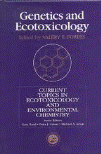Papers in the Biological Sciences

Valery Forbes Publications
Document Type
Article
Date of this Version
2009
Citation
Integrated Environmental Assessment and Management (2009) 5(1): 167-172.
Abstract
This brief communication reports on the main findings of the LEMTOX workshop, held from September 9 to 12,2007, at the Helmholtz Centre for Environmental Research (UFZ) in Leipzig, Germany. The workshop brought together a diverse group of stakeholders from academia, regulatory authorities, contract research organizations, and industry, representing Europe, the United States, and Asia, to discuss the role of ecological modeling in risk assessments of pesticides, particularly under the European regulatory framework. The following questions were addressed: What are the potential benefits of using ecological models in pesticide registration and risk assessment? What obstacles prevent ecological modeling from being used routinely in regulatory submissions? What actions are needed to overcome the identified obstacles? What recommendations should be made to ensure good modeling practice in this context? The workshop focused exclusively on population models, and discussion was focused on those categories of population models that link effects on individuals (e.g., survival, growth, reproduction, behavior) to effects on population dynamics. The workshop participants concluded that the overall benefits of ecological modeling are that it could bring more ecology into ecological risk assessment, and it could provide an excellent tool for exploring the importance of, and interactions among, ecological complexities. However, there are a number of challenges that need to be overcome before such models will receive wide acceptance for pesticide risk assessment, despite having been used extensively in other contexts (e.g., conservation biology). The need for guidance on Good Modeling Practice (on model development, analysis, interpretation, evaluation, documentation, and communication), as well as the need for case studies that can be used to explore the added value of ecological models for risk assessment, were identified as top priorities. Assessing recovery potential of exposed nontarget species and clarifying the ecological relevance of standard laboratory test results are two areas for which ecological modeling may be able to provide considerable benefits.


Comments
Copyright 2009, Wiley. Used by permission.